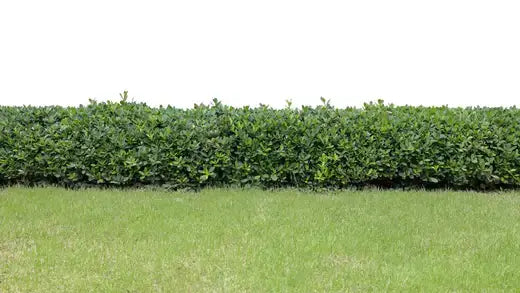Bushes and Shrubs Help Transform Your Gardens
Adding bushes and shrubs to your garden can transform your outdoor space into a luxurious haven. These plants offer diverse colors, textures, and sizes, creating visual interest and enhancing the landscape. Whether you're looking for vibrant blooms, evergreen foliage, or architectural structure, there's a bush or shrub for every garden style. In this guide, we'll explore ten popular bushes and shrubs that can elevate the beauty of your garden. Rose Bushes (*Rosa spp*) Roses are timeless favorites that bring elegance and romance to any garden. With a wide variety of colors and fragrances, they offer endless possibilities for creating stunning focal points.
Types of Bushes and Shrubs
Whether you choose climbing, shrub, or hybrid tea roses, their lush blooms and captivating scents will delight your senses. Boxwood (Buxus spp.) Boxwoods are versatile evergreen shrubs known for their dense foliage and neat growth habit. They're often used for formal hedges, topiaries, and borders. Their small, glossy leaves provide year-round greenery and a touch of classic charm to both traditional and modern landscapes.
Hydrangea (Hydrangea spp.) Hydrangeas are beloved for their large, showy flower heads in various colors, including blue, pink, white, and purple. They add a touch of romance and nostalgia to gardens, thriving in partly shaded areas. From mophead hydrangeas to lace-cap varieties, these plants will captivate your attention. Azalea (Rhododendron spp.) Azaleas are known for their vibrant, trumpet-shaped blooms that herald the arrival of spring.
These acid-loving shrubs come in various colors and thrive in well-drained, acidic soils. They're excellent choices for adding splashes of color to shaded areas of your garden. Lilac (Syringa spp.) Lilacs are famous for their intoxicating fragrance and clusters of delicate, tubular blooms. Their elegant appearance and delightful scent make them a cherished addition to cottage gardens and classic landscapes.
Lilacs come in various colors, from pale lavender to deep purple. Spirea (Spiraea spp.) Spireas are versatile shrubs known for their abundance of flowers and easy maintenance. They produce clusters of blossoms in shades of pink, white, or red, creating a profusion of color in spring and summer. Spireas vary in size, making them suitable for borders, hedges, or foundation plantings.
Forsythia (Forsythia spp.) Forsythias herald the arrival of spring with their vibrant yellow flowers that appear before the leaves. Their arching branches create a stunning visual effect when planted en masse. Forsythias thrive in full sun and add a cheerful burst of color to early spring landscapes.
Weigela (Weigela spp.) Weigelas are known for their trumpet-shaped flowers that attract hummingbirds and butterflies. These deciduous shrubs come in various flower colors, including pink, red, and white. Weigelas' graceful arching branches and prolific blooms make them stand out in gardens.
Butterfly Bush (Buddleja spp.) As the name suggests, butterfly bushes are magnets for butterflies and pollinators. They produce long panicles of fragrant flowers in shades of purple, pink, white, and even yellow. Their airy appearance and ability to attract wildlife make them a favorite in informal gardens. Rhododendron (Rhododendron spp.)
Rhododendrons are stunning evergreen shrubs with bold, showy blooms and glossy leaves. With vast colors and sizes, they create a breathtaking display in spring. Rhododendrons prefer acidic soils and add a touch of elegance to woodland gardens and shaded areas. Planting and Care Tips When incorporating bushes and shrubs into your garden, consider these general planting and care tips: Site Selection: Choose appropriate plants for your garden's sunlight and soil conditions. Some bushes like the sun, while others prefer shade.
Soil Preparation: Prepare the planting area by improving soil drainage and adding compost or organic matter. Ensure the soil pH is suitable for the chosen plants. Spacing: Follow spacing recommendations to give your bushes and shrubs room to grow. Proper spacing prevents overcrowding and promotes healthy growth. Watering: Provide adequate water during the establishment period and maintain consistent watering as needed. Consider using mulch to retain moisture and suppress weeds.
Care For Bushes and Shrubs
Pruning: Regular pruning helps maintain the desired shape, promote flowering, and remove dead or diseased branches. Different shrubs may have specific pruning requirements, so familiarize yourself with each plant's needs. Fertilizing: Apply balanced fertilizers or specific formulations for the chosen plants during the growing season.
Follow recommended guidelines for optimal results. Pest and Disease Management: Monitor your plants for pests and diseases and address any issues promptly. Conclusion Introducing bushes and shrubs to your garden brings beauty and happiness into your space. With a wide range of shapes and sizes, you can create a landscape that reflects your style and preferences.
Whether you're drawn to the elegance of roses, the structure of boxwoods, or the charm of lilacs, the world of bushes and shrubs offers endless possibilities for enhancing your garden's beauty and creating a thriving outdoor sanctuary.



